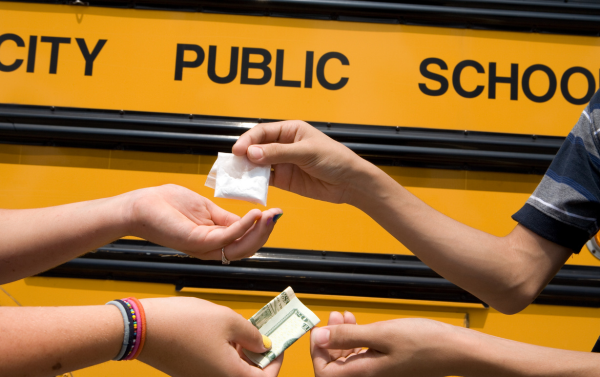 Children under 14 are dying of fentanyl poisoning at a rate faster than any other age group, according to a new report from Families Against Fentanyl, a nonprofit group broadening awareness about the deadly opioid. And even more alarming, infant fentanyl deaths increased twofold between 2019 and 2021, while deaths among toddlers between the ages of 1-4 more than tripled – according to the FAF.
Children under 14 are dying of fentanyl poisoning at a rate faster than any other age group, according to a new report from Families Against Fentanyl, a nonprofit group broadening awareness about the deadly opioid. And even more alarming, infant fentanyl deaths increased twofold between 2019 and 2021, while deaths among toddlers between the ages of 1-4 more than tripled – according to the FAF.
Fentanyl is a completely laboratory-made opioid that is 100 times more potent than morphine and 50 times more potent than heroin. And because it is odorless and tasteless, those purchasing substances directly from street vendors or online are unable to determine whether the product they’re seeking is potentially laced with fentanyl.
A considerable number of medicine cabinets contain opioids. Mom, dad, and grandparents may have received prescription opioids for pain management for myriad reasons, such as recent surgeries, aches and pains secondary to certain medical conditions such as arthritis and neuralgia, or for various injuries. So, all the young person must do is conduct a simple raid on a medicine chest. Adolescents often get their first taste of opioids via a medical procedure of their own, such as wisdom teeth removal, and then there’s the ever-present possibility that they’re lured in by other teens in their peer group who have already taken the plunge into the drug world. However, an increasingly more sinister introduction to the illicit drug world has gained considerable traction in recent years – online access via Snapchat and Instagram.
Here’s how it goes down. Drug dealers post ads and photos of drug products replete with hashtags, emojis, and instructions for how to contact them. Emojis commonly used in a drug dealer’s pitch to a potential adolescent buyer include a “plug” which references the dealer himself; a “rocket ship” which is a reference to getting high; a grouping of tablets in an array of different colors which represent “rainbow fentanyl”; a “blue crystal” indicative of methamphetamine; and a “snowflake” representing cocaine. Then, once the buyer decides on a product, he is usually directed to another portal outside Snapchat or Instagram, where payment via digital services such as Zelle or Venmo is completed. The sad consequence of such transactions is that a teen who purchases a Xanax “candy bar” or Percocet online, increasingly will obtain it adulterated with a lethal dose of fentanyl.
Thankfully, there are several online content-control software suites available which are marketed towards parents as vehicles for monitoring and controlling adolescent computer and phone activity. Popular apps include Net Nanny, Bark, Our Pact, and KidsGuard Pro. These apps block questionable or dangerous content before an adolescent user sees it, and they filter websites, monitor digital activity, limit screen time, and check in on texts and e-mails. They also surveil numerous social media networks – including YouTube – where the teen may be searching for or viewing questionable content. Also, alerts are sent to parents if signs of cyberbullying, online predators, or adult content are detected.
Adolescence is a period when emotional lability is quite common, while reasoning and decision-making has yet to catch up. Risk-taking is clearly in the driver’s seat during this growth and development period, because the teen brain has all the characteristics of a car with a fully functioning accelerator, but a weak braking system.
It is imperative that parents begin a conversation about drug use when children are young, addressing dangers, consequences and serious risks of experimenting with tainted products. Search your teen’s chest of drawers, backpacks, and phones – be as fully aware as possible of what’s going on in their lives. Keep an eye out for changes you may see, such as losing interest in otherwise pleasurable activities, or if their grades are dropping. And, become acquainted with potentially dangerous platforms like Snapchat and Instagram.
Simply put, do anything and everything feasible to curb drug use during adolescence, because the earlier in life someone starts using, the higher the risk of developing a bonafide substance use disorder (SUD) as an adult.
Attribution Statement:
Joe Wegmann is a licensed pharmacist & clinical social worker has presented psychopharmacology seminars to over 10,000 healthcare professionals in 46 states, and maintains an active psychotherapy practice specializing in the treatment of depression and anxiety. He is the author of Psychopharmacology: Straight Talk on Mental Health Medications, published by PESI, Inc.
To learn more about Joe’s programs, visit the Programs section of this website or contribute a question for Joe to answer in a future article: joe@thepharmatherapist.com.